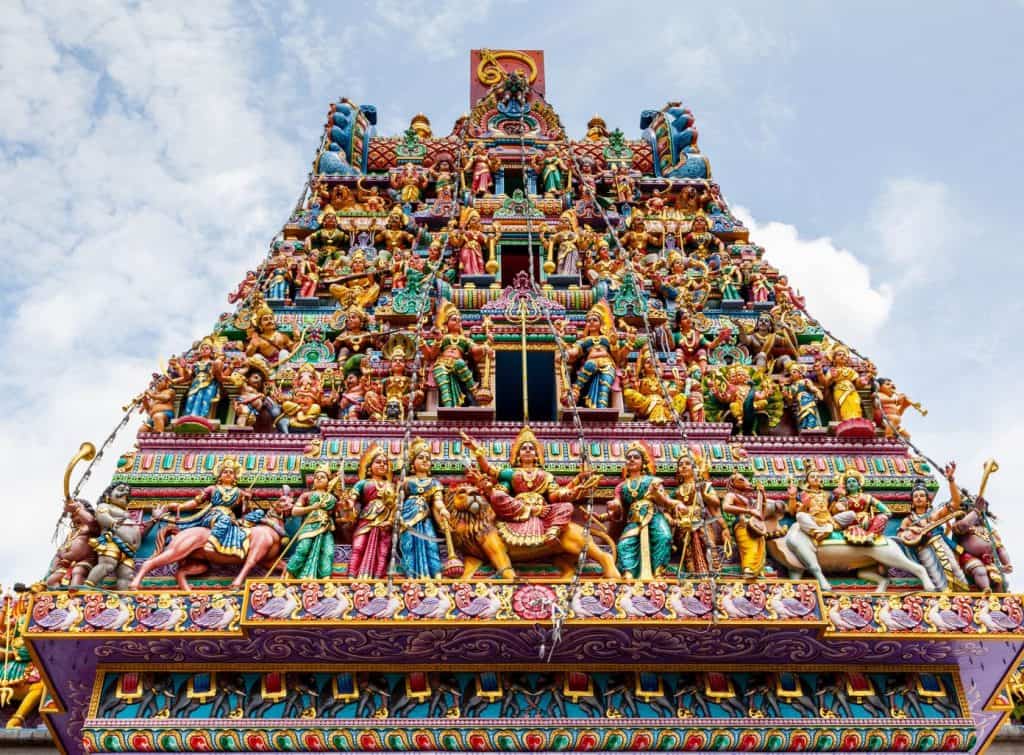Singapore is a vibrant city-state known for its diverse culture and rich heritage. The city is a melting pot of various ethnic communities, each with its own unique contributions to Singapore’s cultural tapestry. One such community is the Tamil community, which has left an indelible mark on Singapore’s tourist attractions, cuisine, festivals, and even its language. In this article, we will take you on a journey to explore Singapore’s tourist places with a Tamil influence, giving you a taste of the Tamil Nadu experience right in the heart of Singapore.
Understanding Singapore’s Cultural Diversity
Singapore’s cultural diversity is what makes the city so fascinating and unique. The city boasts a multicultural society where people from different ethnic backgrounds live harmoniously side by side. This diversity is evident in the various languages spoken, the places of worship, the cuisines, and the festivals celebrated. Among the different communities, the Tamil community holds a significant place, contributing to the rich cultural fabric of Singapore.
The Tamil Influence in Singapore
The Tamil community in Singapore has a long and storied history. Many Tamilians migrated to Singapore during the colonial era, bringing with them their language, customs, and traditions. Over the years, the Tamil community has played a vital role in shaping the cultural landscape of Singapore. Their contributions can be seen in various aspects of Singaporean life, from the architecture to the festivals celebrated.
One prime example of the Tamil influence in Singapore is the vibrant neighborhood of Little India. Walking through the streets of Little India, you can immerse yourself in the sights, sounds, and scents reminiscent of Tamil Nadu. The colorful shops selling traditional Indian clothing, the aroma of spices wafting through the air, and the lively atmosphere make Little India a must-visit destination for anyone looking to experience Tamil culture in Singapore.
Multiculturalism in Singapore’s Tourist Spots
While the Tamil community has its own unique cultural identity, it is important to note that Singapore’s tourist attractions reflect the city’s multiculturalism as a whole. Many tourist spots in Singapore seamlessly blend various cultural influences, providing visitors with a truly multicultural experience.
For instance, the sprawling Gardens by the Bay, with its iconic Supertrees and diverse flora, showcases the harmonious blend of nature and modernity. Visitors can explore the different gardens inspired by various cultures, including Tamil, Malay, Chinese, and more.
Similarly, the Malay Heritage Centre and the Chinatown Heritage Centre offer insights into the Malay and Chinese cultures, respectively. These cultural enclaves allow visitors to delve into the history, traditions, and customs of these communities. The Tamil influence can also be found in these heritage centers, highlighting the interconnectedness of Singapore’s various ethnic communities.
Top Tamil-Influenced Tourist Attractions in Singapore

Now that we have an understanding of Singapore’s cultural diversity and the Tamil influence, let’s explore some of the top tourist attractions in Singapore with a Tamil connection. These attractions serve as gateways to Tamil culture, adding an extra layer of depth to your visit.
Little India: A Slice of Tamil Nadu in Singapore
Little India is undoubtedly the most prominent Tamil-influenced tourist attraction in Singapore. As mentioned earlier, this vibrant neighborhood is a haven for anyone looking to immerse themselves in Tamil culture. From the colorful saree shops to the busy street markets, Little India overflows with Tamil flavors and a sense of community.
Take a stroll along the bustling Serangoon Road, and you will be greeted with the sights and sounds of Tamil Nadu. Indulge in South Indian cuisine at the numerous restaurants and eateries, savoring traditional dishes like dosai, idli, and masala chai. Don’t forget to visit the Sri Veeramakaliamman Temple, a magnificent Hindu temple dedicated to the goddess Kali. Its impressive architecture and intricate carvings make it a must-visit attraction for both devotees and curious tourists alike.
Sri Veeramakaliamman Temple: A Spiritual Landmark
Located in the heart of Little India, the Sri Veeramakaliamman Temple holds great religious significance for the Tamil community in Singapore. This majestic temple, with its ornate towers and vibrant colors, stands as a testament to the devotion and cultural pride of the Tamil community.
Inside the temple, visitors can witness various religious ceremonies and rituals, offering a glimpse into the rich spiritual traditions of Tamil Nadu. The temple’s serene ambiance and intricate sculptures make it a captivating place for reflection and reverence.
Mustafa Centre: A 24-Hour Shopping Experience
If you’re looking for a one-stop shopping destination that showcases the diversity of the Tamil community in Singapore, look no further than the Mustafa Centre. This famous 24-hour shopping complex offers everything from groceries to electronics, and everything in between.
Step inside Mustafa Centre, and you will be greeted with a vast array of products, reflecting the interests and tastes of Singapore’s multicultural society. From traditional Indian clothing to the latest gadgets, Mustafa Centre is a shopaholic’s paradise. Don’t forget to explore the extensive selection of spices, sweets, and snacks, allowing you to savor the flavors of Tamil cuisine right from the shelves.
Tamil Cuisine in Singapore

No exploration of Singapore’s Tamil culture is complete without indulging in the flavorsome Tamil cuisine. The Tamil community has brought their culinary traditions to Singapore, creating a vibrant food scene that caters to both locals and tourists alike.
Exploring Singapore’s Tamil Food Scene
When it comes to Tamil food in Singapore, there are numerous options to satisfy your taste buds. From humble street food stalls to upscale restaurants, you can find Tamil dishes that cater to every budget and palate.
Start your gastronomic adventure with a visit to a local hawker center, where you can savor authentic Tamil delights such as roti prata, thosai, and biryani. These vibrant food centers offer a wide variety of options, allowing you to explore different flavors and combinations.
If you’re looking for a more upscale experience, there are many Tamil restaurants in Singapore that offer a fine dining experience. These restaurants not only serve traditional Tamil dishes but also provide a modern twist to the flavors, creating a fusion of old and new.
Popular Tamil Dishes to Try in Singapore
Want to know which Tamil dishes to try during your visit to Singapore? Here are some popular Tamil dishes that shouldn’t be missed:
- Chettinad Chicken: A spicy and flavorful chicken curry from the Chettinad region of Tamil Nadu.
- Mutton Briyani: Fragrant basmati rice cooked with succulent mutton and aromatic spices.
- Masala Dosa: A crispy rice and lentil crepe served with a variety of chutneys and sambar.
- Aappam with Stew: Soft and fluffy rice pancakes served with a hearty vegetable stew.
- Jelebi: A sweet and syrupy dessert made with deep-fried batter, soaked in sugar syrup.
These dishes provide a glimpse into the rich culinary heritage of Tamil Nadu, allowing you to savor the authentic flavors and spices of the region right here in Singapore.
Tamil Festivals Celebrated in Singapore
A visit to Singapore during one of the Tamil festivals is an immersive experience that allows you to witness the vibrancy and cultural fervor of the Tamil community. These festivals provide a glimpse into the religious practices, traditions, and values that shape Tamil culture.
Pongal: The Harvest Festival
Pongal is a significant Tamil festival celebrated in Singapore and around the world. Also known as the Harvest Festival, Pongal is a time to give thanks for a bountiful harvest and seek blessings for the upcoming year.
During Pongal, you can witness colorful rituals and ceremonies at various temples in Singapore, including the Sri Thendayuthapani Temple. Offerings of freshly harvested crops, such as rice, sugarcane, and fruits, are made to the deities as a symbol of gratitude. Visitors are often welcomed to partake in these celebrations, allowing them to experience the warmth and joy of the festival.
Thaipusam: A Display of Devotion
Thaipusam is another significant Tamil festival celebrated with great fervor in Singapore. Devotees gather at the famous Sri Srinivasa Perumal Temple to embark on a procession to the nearby Batu Caves, carrying kavadis – elaborate structures adorned with flowers, peacock feathers, and sometimes, metal skewers.
Witnessing the Thaipusam procession is a mesmerizing experience, as devotees display their faith and endurance by piercing their bodies and enduring physical hardships along the way. The vibrant atmosphere, the beating of drums, and the scent of incense fill the air, creating an unforgettable spectacle.
Learning Tamil in Singapore
Interested in delving deeper into the Tamil language and its cultural roots? Singapore offers various opportunities to learn Tamil, whether you’re a local or a visitor eager to explore the language.
Tamil Language Schools and Courses
Several language schools in Singapore specialize in teaching Tamil, catering to learners of all levels. These institutions offer comprehensive courses that cover all aspects of the language, from basic vocabulary and grammar to advanced reading and composition.
Whether you’re a beginner or an advanced learner, attending a Tamil language course can be a rewarding experience that allows you to connect with the Tamil community and gain a deeper understanding of their culture. By learning the language, you can also enhance your experience when exploring Singapore’s Tamil-influenced tourist places, as it helps in engaging with the locals and immersing yourself in the Tamil ambiance.
The Importance of Tamil Language in Singapore
The Tamil language holds a special place in Singapore’s multicultural society. Recognizing the significance of preserving and promoting Tamil heritage, the Singapore government has implemented various initiatives to promote the learning and use of the Tamil language.
From the inclusion of Tamil as one of the official languages of Singapore to the provision of Tamil language resources in libraries and educational institutions, steps have been taken to ensure that the Tamil language remains an integral part of Singapore’s linguistic landscape.
By learning Tamil, not only can you unlock new cultural experiences and strengthen your connection with Singapore’s Tamil community, but you can also contribute to the preservation and promotion of Tamil heritage in Singapore.
Conclusion
Exploring Singapore’s tourist places with a Tamil influence offers a unique and enriching experience. From the vibrant streets of Little India to the flavorsome Tamil cuisine, from the majestic temples to the lively festivals, Tamil culture has undeniably shaped Singapore’s cultural landscape.
By immersing yourself in the sights, sounds, and flavors of Tamil Nadu, you can gain a deeper appreciation for Singapore’s multicultural society and its commitment to preserving and celebrating its diverse heritage. So, pencil in a visit to Singapore’s Tamil-influenced tourist places, and embark on a journey that will leave you with lasting memories of culture, community, and connection.








